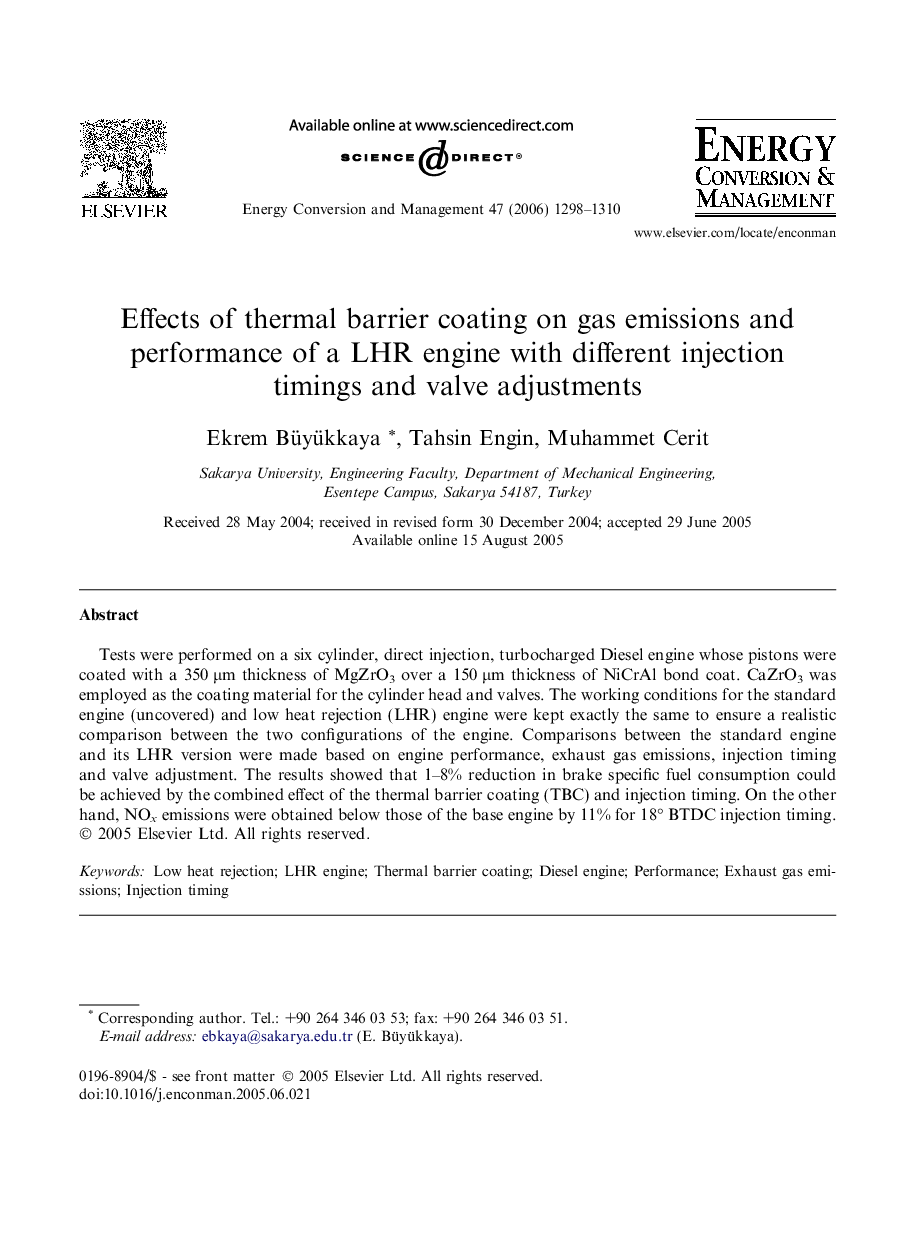| Article ID | Journal | Published Year | Pages | File Type |
|---|---|---|---|---|
| 773134 | Energy Conversion and Management | 2006 | 13 Pages |
Tests were performed on a six cylinder, direct injection, turbocharged Diesel engine whose pistons were coated with a 350 μm thickness of MgZrO3 over a 150 μm thickness of NiCrAl bond coat. CaZrO3 was employed as the coating material for the cylinder head and valves. The working conditions for the standard engine (uncovered) and low heat rejection (LHR) engine were kept exactly the same to ensure a realistic comparison between the two configurations of the engine. Comparisons between the standard engine and its LHR version were made based on engine performance, exhaust gas emissions, injection timing and valve adjustment. The results showed that 1–8% reduction in brake specific fuel consumption could be achieved by the combined effect of the thermal barrier coating (TBC) and injection timing. On the other hand, NOx emissions were obtained below those of the base engine by 11% for 18° BTDC injection timing.
